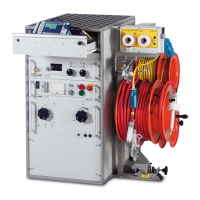26
Increase voltage 20-50% higher than ignition
voltage of fault, release impulse by pressing
single impulse button.
IRG 2000 shows secondary measurement –
fault location at negative reflection
In case of not sufficient secondary
measurement further three measurements of
MIM could be used to locate the fault. Add
this measurement by clicking on the button
“line select” on right side of toolbar (available
at range 2048m and higher).
To avoid any unnecessary thermal overload of the pulse shaper incorporated at SA 32, the
SIM – MIM should be used on single pulse release only. SIM must be switched off after 20
impulses for five minutes.
Hints for practise:
• If both echograms displayed after a HV trigger looking similar, probably no flashover
was achieved at the fault position due to too low surge voltage.
Remedy: a new measurement should be done with a higher surge voltage
• If the displayed echograms have to be moved vertically, they can be adjusted by
using the vertical shifting function of the IRG 2000 at the Compare menu. In addition
the trigger delay time could be increased by one step.
• If the SIM echogram is interfered by heavy noise, the trigger delay time was too short.
(This is evident by bad overshooting and square waves).
Remedy: Increase trigger delay time by one or two steps and repeat measurement. In
case of MIM measurement have a look to the additional pictures (using “Line Select”
button).
6.3 Application SIM – MIM with DC voltage (SIM DC)
Application range: for intermittent cable faults, faults with extended flash over time and flash-
over faults.

